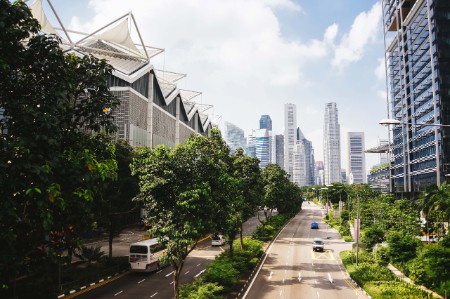Given the impact commercial buildings can have on the environment, investors of all stripes, from real estate investment trusts (REITs) and insurance companies to private investors, seem to be taking notice, with acquisition criteria that increasingly embrace assets with the added value of sustainability strategies. Therein lies the all-important link between environment and smart buildings.
First, some background is needed. A projected 54% to 66% increase in global urbanization and the expected rise of “mega-cities” with 10 million or more inhabitants by 2030 will put a major strain on already limited natural resources. Compounding this issue is the fact that, according to the US Green Building Council, commercial and residential buildings account for 39% of carbon dioxide emissions in the United States alone.
Against this backdrop of dwindling resources, sustainability will continue to be a priority of governments and stakeholders alike. Therefore, being on the right side of government action can mean considerable savings and added value for real estate investments.
Certification standards focusing on energy and water conservation and greenhouse gas reduction are seen as a major marker of value-added investment. In fact, Leadership in Energy and Environmental Design certifications have increased from 6% in 2005 to 40% just nine years later.
Smart building technology can help manage and enhance sustainability compliance.
Like virtually all capital expenditures, the return on investment (ROI) will vary across property types. However, the returns on these technologies can generally be seen within two years.
Real estate assets built and managed sustainably — with building automation systems in place to monitor and manage such issues as energy and water and waste issues — tend to outperform their traditional counterparts.
As a result, investment firms like Morgan Stanley are factoring in key performance indicators (KPIs) in sustainability along with more traditional KPIs to get a better handle on long-term asset outcomes. Insurance companies and financing institutions as well are looking at sustainability initiatives and metrics to help minimize the risk of noncompliance.
In 2016, Morgan Stanley’s Institute for Sustainable Investing released a report that detailed the benefit of sustainable approaches.
The report noted a reduction in capital expenses due to 20% faster lease-up rates for sustainable buildings compared with their conventional counterparts as well as a 3% rent premium and a 2% increase in occupancy rates. Also, sale premiums rose between 10% and 30% on buildings with sustainable certifications.
The report also pointed out that financing costs can be reduced by securing funding for improvements through green bonds, which offer comparatively low rates, and government incentives. In fact, in 2014, two commercial REITs raised US$700 million through green bonds. Also, Fannie Mae and Freddie Mac recently announced that they are offering up to a “27 basis-point reduction in loan interest rates and higher loan‐to-value limits for multifamily housing projects with sustainability certifications or a borrower commitment to lower annual energy or water use by 15%.”


